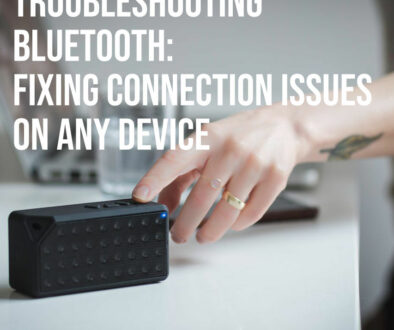Beyond Keys & Wallets: 32 Creative Uses for Apple AirTags When Traveling
Apple’s AirTags have become a go-to solution for tracking everyday essentials like keys, wallets, and backpacks. But for travelers, these tiny Bluetooth trackers can do so much more. While most people use AirTags to keep tabs on their luggage, there are plenty of underrated and clever ways to leverage them on trips—from safeguarding expensive gear to ensuring you never lose your rental car in a foreign city.
However, AirTags aren’t perfect. They rely on Apple’s Find My network, meaning they work best in areas with plenty of iPhone users. They also lack built-in GPS, so remote travel destinations can pose challenges. And while they’re great for locating lost items, they won’t necessarily prevent theft—just help you find what’s missing.

32 Creative Ways to Use Apple AirTag When Travelling
In this article, we’ll explore unexpected and practical ways to use AirTags while traveling—beyond just sticking one in your suitcase. Whether you’re a frequent flyer, a road-tripper, or an adventure traveler, these tips could save you time, money, and stress on your next trip.
1. Tracking Luggage & Bags
The Obvious (But Essential) Use Case is to just stick an AirTag into your luggage. It’s the most common way travellers use AirTags, by slipping them into checked luggage, carry-ons, or backpacks. Since airlines misplace millions of bags every year, having real-time tracking can give you peace of mind and help you track your luggage.
How Does It Work
Apple’s Find My Network crowdsources location data from nearby iPhones, updating your bag’s position even if it’s out of Bluetooth range. This ‘triangulation method allows for precision finding (on iPhone 11 and later) lets you zero in on your luggage in crowded baggage claim areas. AirTag’s long battery life (up to a year) means you don’t have to worry about recharging mid-trip.
How to Use It
Hide it well – Tuck the AirTag in an interior pocket or a discreet compartment to prevent thieves from finding and discarding it. Use a secure holder – A silicone keychain or adhesive pouch keeps it from rattling around or falling out. Lastly, check airline policies – While AirTags are FAA-approved, some international airlines may have restrictions on Bluetooth trackers.
Limitations
If your bag is in a remote warehouse or cargo hold with no iPhones nearby, location updates may be delayed. Airlines also won’t always act on AirTag data—you’ll still need to file a lost luggage claim.
2. Keeping Tabs on Important Travel Gear
Protecting High-Value Items: Beyond luggage, AirTags can help track easily misplaced (or stolen) gear, such as:
- Cameras & lenses (especially for photographers)
- Laptops & tablets (slip an AirTag into your laptop sleeve)
- Jewellery & passports (hidden in a travel wallet or document organiser)
Here are some take aways, to track your travel gears; use se a slim holder – flat adhesive AirTag cases can fit inside tight spaces. Silence the speaker – some thieves may hear the AirTag’s beeping if they search for it. You can find our tutorials to disable the sound. Lastly, pair with a lock for extra security, use a TSA-approved lock on bags containing valuables.
There are some limitations. There is no tamper alerts on AirTags. Unlike some GPS trackers, AirTags won’t notify you if removed from your bag. The other limitation is Bluetooth range – If your stolen item is taken far from Apple devices, tracking becomes harder.

3. Child & Pet Safety (With Caution)
The following are controversial but useful in certain scenarios. While AirTags aren’t designed as child or pet trackers, some travelers use them as a backup safety measure in crowded places. The possible uses include:
Trading Your Kids in Busy Airports – Clip one to a child’s backpack in case they wander off. This would have helped Kevin in Home Alone!
Pets in transit – Attach to a pet carrier (but ensure it’s secure and not a choking hazard). You can then track your cats whereabouts if its the sort like loves to wander off.
Teens on group trips – Helps chaperones keep track of older kids exploring foreign cities. This last one would probably need the parents consent, a small price for not being left behind.
It is important to note that in such an application you need to be aware of the following:
- Anti-stalking alerts – If an AirTag is separated from its owner for too long, it will start beeping, alerting anyone nearby.
- AirTag is not Not a dedicated GPS tracker – For real-time tracking, consider a wearable GPS device designed for kids/pets.
- Ethical concerns – Using AirTags to track people without consent can be problematic (and illegal in some places).
There are of course safer alternatives such as using Apple Watch (Family Setup) – For real-time kid tracking with cellular and Fi or Tractive collars – GPS-enabled pet trackers with live updates.
4. Finding Your Parked Rental Car in an Unfamiliar City
The struggle is real, we’ve all been there—wandering through a massive parking garage or crowded street, desperately trying to remember where we left the rental car. With an AirTag, this headache becomes a thing of the past. Having said that, Apple Maps automatically saves your parked location when you disconnect from CarPlay. You can then use Apple Maps, that is if the rental car supports CarPlay and you connected to it to begin with.
How to Use an AirTag for Your Rental Car
To use AirTag in your rental car, placement matters. Hide the AirTag in the glove compartment, centre console, or under a seat to keep it secure but accessible. Avoid sticking it to metal surfaces, which can interfere with Bluetooth signals. Remember to remove the AirTag when you hand your rental car back.
Drop a Pin Before Exiting
Circling back to the point we made about CarPlay. If you haven’t connected to the rental car, use Apple Maps or Google Maps to manually save the location. The AirTag then serves as a backup in case GPS is unreliable (e.g., underground parking). Use Precision Finding (iPhone 11 and later) to locate your car if you struggle to find it. If you’re within Bluetooth range (~30 feet), follow the on-screen arrows to locate the car.
Pros vs. Built-In Car Tracking
| Feature | AirTag | Rental Company GPS |
|---|---|---|
| Real-Time Tracking | Only updates near iPhones | Yes (with subscription) |
| Cost | One-time purchase (~$25) | Often expensive daily fees |
| Privacy | No rental company monitoring | Some track driving behavior |
5. Document & Valuables Tracking
Other important things to track are you travel documents, wallets and other valuables. With AirTag, you will never lose your passport (or cash) again. Travel documents, credit cards, and emergency cash are some of the worst things to misplace when you are travelling. An AirTag can help recover them quickly.
Best Ways to Track Important Items
For Passport Holders & Wallets, slip an AirTag into a RFID-blocking sleeve (but test for interference first). Some travel wallets (like Ekster Parliament) have built-in AirTag slots. You can also use AirTags hidden in Cash Belts or Pouches. This will ensure that your backup emergency money is safe and that you can track it if it is stolen from a hotel safe. If you have expensive camera and electronics, considering dropping AirTags into the camera bags & electronics cases. We know how precious cameras are to photographers and gadgets are to techies and geeks. Protect your expensive gears during travel.
What Doesn’t Work Well
- Metal Wallets – Can disrupt Bluetooth signals.
- Checked Bags with Strict Security – Some countries may inspect and remove unknown devices.
6. Group Travel Coordination
When traveling with family or friends, AirTags can help manage group belongings and keep track of shared gears. Use AirTag in your next group trips to track coolers and supplies so you are not too far from a drink or snacks. If you are you are flying to taking the train or ferry together, track your checked bags for easy identification and splitting. Then there is company work trips, conferences, roadshows and events. Use AirTags to track event gears and cases. This can also applied to groups going to a festivals, fishing trips, sports kit or hikes.
How to Share Access (Sort Of)
AirTags don’t support real-time sharing, but you can set up Family Sharing so others can see the tag in “Find My.” You can also use Lost Mode to notify everyone if an item goes missing. There are however limitations for this application. There is no live group tracking – unlike GPS devices, you can’t see movement in real time. If there are Android users in your team or group, they unfortunately can’t view them unless scanning manually via NFC. But don’t fret, there is alternative for trackers that supports Groups like Tile Premium ($10/month) which allows unlimited sharing with friends.

7. Off-the-Grid Travel Hacks
Another useful application for AirTag is when you venture beyond cellular coverage. While AirTags rely on Apple’s Find My network (which needs nearby iPhones), they can still be surprisingly useful in remote areas with some clever tricks.
Creative Solutions for Wilderness Travel
Use AirTag to marking campsites and trailheads by simply attaching an AirTag to your tent or gear stash before day hiking. This helps locate your base if visibility drops. This solution works best in moderately trafficked areas (like popular national parks).
You can also use it to tracking critical gear by securing it to a dry bag if kayaking, or clip to climbing gear at a base camp. Remember to use a rugged, waterproof case for outdoor conditions. And just like tracking your rental car, leave an AirTag in the parked Emergency Vehicle at trailheads as a backup if GPS fails. It will help you locate your Emergency Vehicle when you need it the most.
Workarounds for Limited Connectivity
Here are some workarounds to keep everything ticking when out in the wilderness:
- Pre-sync locations – Drop a pin in offline maps before losing service.
- Manual checks – AirTags store location history; may update when back in range.
However, if you are out in the most remote areas, far away from any civilisation or facilities, we strongly recommend a Dedicated GPS Tracker Instead – For true backcountry travel, use one of these:
- Garmin inReach (satellite messaging + tracking)
- Spot Gen4 (global emergency SOS)

8. Unexpected & Temporary Uses
AirTags shine for temporary tracking needs while traveling such as tracking a bike or scooter rentals. Not so much those with controlled by rental apps but those that you rent from a shop or visitor centre. You can hide it in the seat compartment to recover if stolen (common in cities like Amsterdam).
Another unexpected application is when checking your bag or coat in at an Event. You can tag your coat or bag at crowded venues for quick retrieval.
You can also use it when you are shipping valuables via courier or the post. Slip an AirTag into packages for unofficial tracking (though not as reliable as commercial options).
Lastly, if you are staying in a sketchy Airbnb? Hide an AirTag to monitor unauthorised removal after leaving the accommodation. You can track the luggage you left at the accommodate for the day or if they were accidentally left behind after you check out.
(Note: Check local laws—some regions prohibit surveillance devices.)

Cautions & Limitations
Here is a quick run down of the limitations and drawbacks so you are aware should you decide the use AirTags.
- High-Theft Areas – Thieves may find and discard them.
- Non-Apple Households – Android users can’t proactively track them.
- Privacy Laws – Germany and others restrict Bluetooth trackers.
Key Drawbacks
- No Real-Time GPS – Only updates near Apple devices.
- Anti-Stalking Alerts – Delayed luggage may trigger unwanted beeping.
- Battery Life – Dead batteries leave you unprotected.
Alternatives by Scenario
| Need | Better Option |
|---|---|
| Live GPS Tracking | Tracki, LandAirSea |
| Android Compatibility | Samsung SmartTag2, Tile |
| Theft Prevention | Pacsafe anti-theft bags |
Reimagining Travel Security
AirTags transform from simple key finders into versatile travel tools—whether recovering lost passports, locating rental cars, or safeguarding group gear. While they can’t replace dedicated GPS devices, their seamless Apple integration and low cost make them a first line of defence against travel chaos. To maximise security, combine AirTags with physical locks for layered security. Remember to test placements pre-trip to avoid signal issues. Also, respect privacy laws—especially when tracking shared items. Have a creative AirTag hack we missed? Share your stories below! For off-grid adventures, remember: AirTags help, but always have a backup plan.
Here is a recap of our 32 creative ways to use AirTag (to track) beyond keys and wallets
- check-in luggages
- cabin bags in overhead compartments or under seat
- extra large items: wheel chair , pram or stroller
- cameras and lenses
- laptops and tablets
- jewellery and other valuables
- child at a busy airport or mall and city
- pets in transit
- teens on group trips
- rental car or van
- passport holders
- wallets
- cash belts
- pouches
- video camera
- electronics
- coolers and supplies
- suitcase swapping
- event gear
- business equipment
- fishing gears for the group
- sports kit for the team
- group hike backpacks
- mark campsite
- mark trailheads
- drybag locator
- first air kit
- climbing gear
- emergency vehicle locator
- bike or scooter rentals
- bag or coat at events
- luggage left at accommodation










